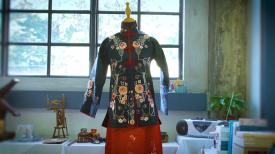Hong Kong Stories - Centennial Stories (English Version) Series 51
The Pawn Industry
27/11/2023
内容
CONTENT
监制:Yoko Pang
27/11/2023
相片集
The pawn industry is an old industry with a history of more than a thousand years. Today, there are still about 180 pawnshops in Hong Kong, although the operating mode has not changed much, the market environment and operations details have changed a lot.
TSUI Chun-pong is a teacher who studied history, and he is very interested in pawn culture. In order to collect information, not only has he visited all the pawnshops in Hong Kong, but he also pawned things at all of them, so that he could talk with the pawners and learn more about the things in the pawn industry.
Alvin and James are two post-90s pawnshop keepers. Like other current pawnshops, after they took over, many electronic technologies were introduced to assist in the operation. For instance, they use computers to record all the transactions, and the calligraphy of “pawn shop characters” on pawn tickets are replaced by the clear characters printed by printers. Although those are “new style” pawn shops, some old designs, such as the concealing board and the six-foot-high solid wood counter are still used today for practical purposes.
“Pawn fans in winter, pawn blankets in summer”, in the past, pawnshops would accept many different kinds of items, so a lot of room had to be reserved for storage, and certain amount of manpower was required to operate the business. Most modern pawnshops, however, only accept gold accessories, diamonds and expensive watches, such that two or three safes are enough to store all the pawned items, and the manpower required can also be greatly reduced. Barry is Ray’s mentor, and they are the pawners of another pawn shop. As they are both in charge of the pawnshop, Barry is trying his best to pass on his knowledge to meet the actual operational needs. This is completely different from the master-student relationship in the past, reflecting that there are more opportunities for promotion in the industry than before, and promotion is also faster.
During the past century, the pawn industry has been changing silently, adapting to the challenges brought about by changes in the social environment.
集数
EPISODES
-
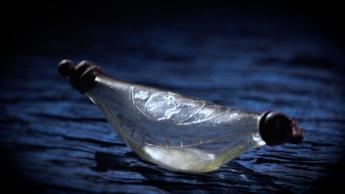
Milk Bottle
Collector Simon CHEUNG collected a variety of glass milk bottles of different eras over the years. The most precious one is a double-headed glass milk bottle that he found in a deserted village in Lung Kwu Tan, Tuen Mun. It was made in Hong Kong approximately 100 years ago. Simon will tell us in detail about the history of the appearance of glass milk bottles in Hong Kong, and how it reflects the social conditions at that time.
At the beginning of the last century, due to material deprivation, most people did not have an easy life. As such, parents’ expectations for their children were often the simplest – to grow up. LO, Ah-heung, a 94-year-old lady, doesn’t recall that her parents have ever told her about their expectations on her, and they only hoped that she could have the ability to survive by herself. Therefore, LO also raised her children in the same way, and she trained them to take care of themselves since they were small, hoping that they would have enough will and perseverance to face different adversities in their lives.
As a mother of two daughters, Carin was once very stressful when her eldest daughter was born. She always put her daughter’s safety first. Although Carin began to learn to relax after the birth of her youngest daughter, the living environment and education system of Hong Kong put a lot of pressure on her, and she even felt a bit lost. Carin hopes to go back to her original wish for her daughters: she only wants her daughters to grow up healthily and happily. On the other hand, there is Jamie, who believes that she should let her children try on their own. Even if they fail or get hurt, it is part of their growth. She believes that it is more important to accompany their children to grow up and provide them with support and encouragement.
Over the past century, how much has the way of parenting in Hong Kong changed?08/01/2024收看 -

Printed Matters in Life
Printed matters have become an inseparable part of our life, and they were essential carriers of cultural heritage and records in the last century. Since early 20th century, Central and Sheung Wan have been filled with shops and companies. The flourishing commercial activities had generated a great demand in printed matters such as invoices and contracts, and that gave rise to many small and medium-sized printing workshops. From typesetting to printing, from paper cutting to binding, they all depend on skillful printing workers. Experienced workers work hard in front of the printing machines, with their hands often stained with ink. Master LAM On was one of them. He started working as an apprentice, and has witnessed the rises and falls of the printing industry until he retired.
Movable type printing was replaced by the more time-saving and convenient offset printing in the 1980s. It has faded inevitably and those movable type printing machines were then abandoned. At the same time, the imperative drive of technology gave multiple hits to the printing industry. With physical printed matters being replaced by computer image files, and people getting used to replace papers with e-books, digital business cards and e-cards, physical printing seemed to be a sunset industry. Nevertheless, some young people still buck the trend and join the industry as a new force, believing that industry transformation can be achieved by incorporating more design elements to printed matters.
Designer Loraine WONG considers that traditional printing is more ingenious and having a greater human touch than digital printing, which operates like a production line. Therefore, she became a student of Master LAM On to learn about the techniques in movable type printing. Apart from reflecting on how to incorporate traditional techniques into modern arts to make cultural and creative products, she also hopes to make printed matters of tactility and passion in the digital world.
Although living in an era of rapid digitalisation, through printed matters, we can still understand the past, feel the present and explore the future. One has to wonder what kind of culture is awaiting in a century’s time.01/01/2024收看 -
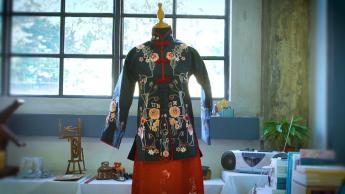
Happy Marriage Thereafter
The kwan kwa is a gown worn by women at their weddings in traditional Chinese wedding etiquette. The red cloth is embroidered with lifelike patterns of dragons and phoenixes using glittering gold and silver threads, and it carries the blessings from the elders to the new couple. A hundred years ago, the Chinese government promulgated the clothing decrees which stipulated the styles of men’s and women’s formal gowns, and so the gown generally adopted by commoners was a black jacket with a red dress. At that time, the use of kwan kwas was not limited to weddings; many people would wear them to grand occasions such as listening to Xiqu.
Qipao master Jody KAN has a collection of kwan kwas with a long history, and she studies traditional Chinese costumes in depth. From the cutting and embroidery patterns of kwan kwas, she interprets the thoughts hidden behind the design of kwan kwas a hundred years ago.
Timmy WONG, who has been running an embroidery shop for more than 40 years and making bridal gowns for countless brides, has witnessed the evolution of kwan kwas and the rise and fall of the kwan kwa industry in the past 40 years. Amid the changes, he sees the eternal value of kwan kwas.
Kwan kwas have become popular since the Qing dynasty and have a history of more than 100 years. Today, many brides still choose a kwan kwa as the bridal gown they wear when they leave their maternal home, and Karen is one of them. Karen, who has entered another stage of her life, had her mother put on a kwan kwa for her when leaving for her husband’s home. She bid farewell to her identity as a daughter and stepped into her husband’s home, and had a special feeling for the symbolic meaning of the kwan kwa.
After a hundred years of evolution, kwan kwas today have very different meanings to newlyweds and each couple has their choice and values they cherish. Nok-yi, who has been married for five years, only had a simple marriage certificate-signing ceremony on the wedding day. The wedding dress she wore was a long white dress borrowed from a friend. She and her husband, Emad, have a different take on the kwan kwa, bridal gown, and weddings.25/12/2023收看 -
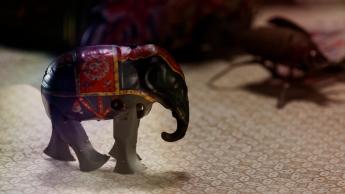
Little Gadgets
When we look back on our childhood, the happiest memories are always about the good friends whom we grew up with, the sweet and delicious snacks, and those toys that we did not want to discard even when they were broken. Toys are not just little gadgets for children, but also friends to them. In the past century, toys have undergone many changes. Take material as an example, ceramic, which was commonly used at the beginning of the last century, was gradually replaced by the more expensive but durable tin. Later, plastic became a popular material, and nowadays many toys are electronic products. All these changes have reflected the transformation of the society.
LAM Leung-tim, who was born in the 1920s, is the founder of a toy factory. As he grew up in a poor family, it was almost impossible for him to have any toys. Nevertheless, with handy shells and branches, or even sand on the ground, he could have fun all day. Inspired by his deprived childhood and his mother’s teachings, LEUNG had been having a “dream of toys” since childhood for establishing his own toy factory one day. Growing up during the war, although leading a turbulent life, he had never given up his dream. When he grew up, he encountered a new material – plastic, since then, his life became inseparable with toys. Even though he is now in his nineties, his life is still closely related to toys.
Toy collector CHONG Hing-fai also has his life inseparable with toys. He came across the toys of his childhood on the street when he was in his twenties, and that ignited his passion in collecting toys. Throughout the years, he has collected a myriad of toys and had done many researches on old toys. He opened a small shop 10 years ago, with a wish to share with children stories about the old toys he collected. Regrettably, he realised that many of the toys that he had enjoyed playing with when he was a child have become unattractive to children nowadays. It makes him wonder, what toys will win the hearts of children nowadays? Have toys been replaced by electronic products or video games? What are the viewpoints of Kenneth, a father of two who has been designing toys for 20 years, and Potato YU Kai-yin, a parent-child game training professional, on the issues?18/12/2023收看 -
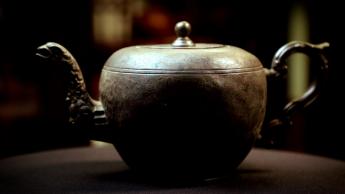
Old Tea Century
One hundred years ago, Hong Kong was the hub and point of sale of Chinese tea, and at that time, tea trade was governed by Nam Pak Hong, and concentrated in the vicinity of Bonham Strand West and Wing Lok Street in Sheung Wan. Among them, Chan Chun Lan Tea Company (“Chan Chun Lan”) has the longest history, Ying Kee Tea House (“Ying Kee”) is another century-old shop, while Ngan Ki Heung Tea Company (“Ngan Ki Heung”) has a history of 93 years.
After going through different eras, old stores have different methods to face the changes in the social environment. Ngan Ki Heung sticks to the tradition and maintain the status quo. Ying Kee hoped that it could create new tastes for tea drinks, and it launched bottled tea and frozen tea series with different flavors in 2008 and 2019 respectively. Unfortunately, on both occasions it ceased the production in the end and focused the resources back on its traditional business. Is it the fate of the old stores to carry the burden of tradition?
The modern tea shops, however, are developing in two opposite directions, one is to emphasise on convenience and friendly prices, and the other is to promote a slow living lifestyle. Through the integration of art and life through tea drinks, modern tea shops promote a deeper cultural content and pursue a good taste in life. Katherine YU, a brand consultant of a modern tea shop, deliberately takes away the symbols of traditional tea drinking culture, repackages tea shops as cafes, with a view to replacing coffee with tea; and at the same time adheres to the traditional way of making tea, hoping to open a new route while preserving the tradition.
Preserving the tradition while pursuing the innovation, there are all kinds of different stories in the industry. For example, the tea shop operated by IP Wing-chi originally mainly serves tea and vegetarian food. Under market challenge, the shop creates tea beers and tea cocktails, and even export them to the United States.
Whether it is a century-old tea shop or a new style tea shop, they all make changes to cope with the development of the economy and society, while looking for a space to survive between tradition and innovation.11/12/2023收看 -
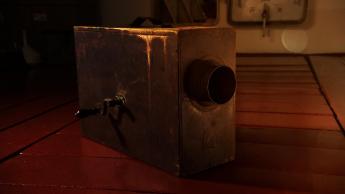
Travel across the Sea
The “Star Ferry” was founded in 1880 by a foreign businessman to provide the ferry service plying between either side of Victoria Harbour between Tsim Sha Tsui and Central. Most of the passengers then were businessmen and government officials. The general public would take the ferry across the harbour only under really emergent situations. Until 1923 when business activities grew frequent, a group of local Chinese merchants founded a new ferry company providing ferry services. Since its first service was from Yau Ma Tei, the ferry company was named “The Hongkong and Yaumati Ferry Company Limited” (HYF). Before the war, major trading and wholesale companies of Hong Kong were located on Hong Kong Island, especially around Sheung Wan, but since many Chinese still lived in Kowloon, a lot of buyers for businesses took the HYF ferry across the harbour for procuring goods.
Before power tools become popular, there were a number of manually operated tools among ferry equipment. One of them was a “blast”, namely a siren, also known as an “air horn”. Inside an air horn is a very thin copper piece that vibrates to produce sound when an air current, created by stirring, flows past it. In the past whenever Victoria Harbour was blanketed in fog, sailors on ferries sailing across the harbour would take an air horn to the front of the ship and stir it hard to give blasts. This would alert the ships nearby of their position to avoid accidents from happening.
After a hectic day, exhausted passengers should well space out and enjoy the 10-odd minutes of their ferry trip leisurely. Yet, there is a professional photographer who cannot help but capture the fast-changing cityscape when taking the ferry across Victoria Harbour if he / she has a camera with him / her. Whether it be a sunset, a nostalgic pier design, or people on the ferry, he / she keeps clicking the shutter. Compared to spacing out, this is another form of enjoyment.
A classic ferry food, a bowl of instant noodles with luncheon meat and egg, turns out to provide the motivation to enhance the ferry service quality.
When Hong Kong’s economy took off in the 1970s, people had heavy demand for vehicular ferry services. Nonetheless, in light of the commissioning of the harbour crossings and the West Kowloon Reclamation for new airport projects, the Jordon Road Ferry Pier service was cancelled and vehicular ferry services declined. Today, the ferries have turned into “dangerous goods vehicular ferries”, providing 24-hour vehicular services for dangerous goods vehicles between Hong Kong Island and Kowloon.04/12/2023收看 -

The Pawn Industry
The pawn industry is an old industry with a history of more than a thousand years. Today, there are still about 180 pawnshops in Hong Kong, although the operating mode has not changed much, the market environment and operations details have changed a lot.
TSUI Chun-pong is a teacher who studied history, and he is very interested in pawn culture. In order to collect information, not only has he visited all the pawnshops in Hong Kong, but he also pawned things at all of them, so that he could talk with the pawners and learn more about the things in the pawn industry.
Alvin and James are two post-90s pawnshop keepers. Like other current pawnshops, after they took over, many electronic technologies were introduced to assist in the operation. For instance, they use computers to record all the transactions, and the calligraphy of “pawn shop characters” on pawn tickets are replaced by the clear characters printed by printers. Although those are “new style” pawn shops, some old designs, such as the concealing board and the six-foot-high solid wood counter are still used today for practical purposes.
“Pawn fans in winter, pawn blankets in summer”, in the past, pawnshops would accept many different kinds of items, so a lot of room had to be reserved for storage, and certain amount of manpower was required to operate the business. Most modern pawnshops, however, only accept gold accessories, diamonds and expensive watches, such that two or three safes are enough to store all the pawned items, and the manpower required can also be greatly reduced. Barry is Ray’s mentor, and they are the pawners of another pawn shop. As they are both in charge of the pawnshop, Barry is trying his best to pass on his knowledge to meet the actual operational needs. This is completely different from the master-student relationship in the past, reflecting that there are more opportunities for promotion in the industry than before, and promotion is also faster.
During the past century, the pawn industry has been changing silently, adapting to the challenges brought about by changes in the social environment.27/11/2023收看 -

Tailor-made
Hong Kong is a city where East meets West. The making of western clothing has a long history. Western clothing was called “fan yi” (foreign clothing) in the 19th century and later took its current name, “suit”. Over the last century, the world’s fashion trends have changed in several eras. A century later, what actually is the value of suits? Have people changed their perception on the value of suits?
In the past, it cost employees a month’s salary to get a tailor-made suit for dressing up for the Chinese New Year. There were tailor shops all around in the 1950’s and tailors could feed their whole family by working day and night.
Nowadays, suit shop owners have to cater to fashion trends and preferences of buyers, as well as focusing on interaction with customers. Meanwhile, some young suit designers see that suits are still a symbol of professional identity, and so they invest in technology in the hope of tailor-making a perfect suit for customers with a more accurate tape measure.
The handmade suit tailoring industry is a craft industry and also one that involves working with people. It can maintain its foothold for a century all because suit tailors, sellers and wearers have played their parts at different times. Just as sewing a suit, everyone adds a stitch to keep the industry going.20/11/2023收看 -

Tram Memories
Tram, commonly known as “Ding Ding”, is one of the oldest means of transportation in Hong Kong, and has been serving the public since 1904. A ticket machine, which has been around for more than a century, will take us on a journey through time: Uncle Kin, who joined Hong Kong Tramways in the 60’s, has worked as a conductor and a tram driver. He has experienced the development of tram in different eras, and witnessed how tram, as the most important means of transportation at that time, was inseparable from public life and urban development.
With the rapid development of the city, efficiency is emphasised in everything. When tram, the fastest means of transportation on land becomes the slowest, its function gradually becomes questionable, causing a dispute over whether we should still keep it. Some people think that trams should be eliminated by time, while some use their own methods to retain them, which are of little value or interest in other people’s eyes. Joseph TSE, a “tram fanatic”, has been fond of tram culture since he was a child. He founded the Hong Kong Trams Culture Preservation Society, hoping to promote people from different levels of society to understand and get in touch with trams. Even if trams will eventually disappear, he is keen to preserve this treasure. From the perspective of environmental protection, a student from the Hong Kong University of Science and Technology reckons that tram is a low-carbon means of transportation. If we want to keep them, changes have to be made. We have to design more humanised trams to provide urbanites with a comfortable riding experience and enough space to relax. Architect Alvin WONG grew up in North Point Estate, and trams bring him a lot of interesting childhood memories. He often organises his fellow “tram fanatics” to draw sketches on the sides of the tramway, to retain the unique scenery of the city from different perspectives, and at the same time, to introduce tram culture to more foreign people.
Trams shuttle between Kennedy Town and Shau Kei Wan on the 13-km winding tram tracks day and night. For more than a century, the “ding-ding” sound of trams has been accompanying the growth of Hong Kong people and society. Apart from being a means of transportation, it is also a cultural symbol and collective memory. Its story is the Hong Kong story. Is it “Change is eternal” or is it “Counter changes with consistency”? We shall let time give the answer.13/11/2023收看 -

Healing Bones with Heart
It has been more than a century since bone-setting clinics rooted in Hong Kong. In the days when Western medicine was not yet popular, people could only go to martial arts schools to ask the “masters” for help whenever they suffered any bone injuries. “Bone-setting”, which was popular among commoners, is in fact a practice of Chinese medicine in martial arts. Master AU Chiu-wing came to Hong Kong with his parents in 1948 when he was 7. He then became a student of the South Eagle Paw master HO Fuk-loi in Tai Po, and at the same time he also learnt herbal and medical knowledge. In the past century, Chinese medicine practitioners have been using the old iron grinder to make herbal extracts to produce ointments and medicines, and treat their patients.
In the 1980s, institutions in Hong Kong began to offer courses in physiotherapy. Eric LAW, one of the first batch of graduates of physiotherapy, retired and left the frontline of the Hospital Authority a few years ago. LAW is also a martial arts master. He has even modified a set of Tai Chi routine, which has become a basic training exercise in physiotherapy for patients in hospital. To combine Chinese and Western medicine is for the well-being of patients after all.
LEUNG Tin-chu follows his father’s footsteps and opens a bone-setting clinic in Sham Shui Po, but he embarks on a path of innovation. As he wants to change peoples’ impression that “a Chinese medicine clinic is equivalent to a martial arts school”, LEUNG does not adopt the traditional serious layout in his clinic, but fills the clinic with his collections – bone accessories, toys and ornaments, and even toy capsule vending machines and claw machines, as well as the humorous slogans he designed – with a wish that patients can receive their treatment in a relaxing environment. In addition, LEUNG himself has been pursuing new knowledge. Despite being a Chinese medicine practitioner inheriting ancestral knowledge, he still furthers his studies and becomes a doctor in Chinese medicine. From the certificate of degree to diplomas and other certificates, LEUNG displayed more than 200 certificates in his clinic. Although he is a “new style” Chinese medicine practitioner, his tireless and rigorous attitude has already won the trust from the elderly in the neighbourhood.
Bone-setting has become less related to martial arts, but it has become more relevant to sports science. Leanne WU is a physiotherapist, but she is more well-known as a key opinion leader (KOL) in personal training. Apart from healing bone and muscle injuries, working-out also improves one’s body shape and functional capacity. Leanne believes that physiotherapy should evolve from rehabilitation to prehabilitation, that is, to improve one’s body condition continuously for the prevention of sickness, rather than to treat one’s pains and strain injuries only after they appear.
In the past century, there have been many changes in our society, economy and culture. And people’s pursuit to a quality life has also changed greatly.06/11/2023收看



